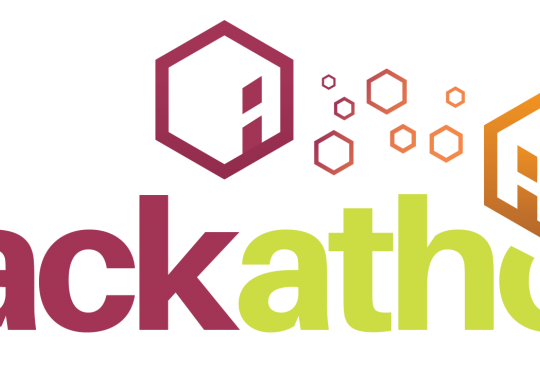Eduroam? Nexus? Quest? If this is your first year at the University of Waterloo, you may feel like you’re drowning in all sorts of new acronyms, names, and terminology. Consider this article a life vest for traversing the waters of uWaterloo’s most used tech-services.
Eduroam
Eduroam CAT
Nexus Mail
Quest
LEARN
uPrint
Eduroam
Let’s start with the basics: uWaterloo’s Wi-Fi system, Eduroam. Eduroam is a secure wireless network that is accessible across campus and available at many higher education institutions around the world. Classrooms, offices, and residence buildings all offer this service for free. You can connect to it via any computer or smartphone and receive fast, reliable Internet service.[i] But, accessing Eduroam can sometimes be tricky, so let’s lay it out and take it step-by-step.
- Access the list of available Wi-Fi connections on your device, and ensure that Eduroam is listed.
- Select Eduroam from the list.
- When prompted, enter your username and password
- Your username is your uWaterloo email address, which looks like userid@uwaterloo.ca. For instance, if your name is John Smith your userid might be jsmith and your email would be jsmith@uwaterloo.ca. (Note that Eduroam relies on your userid and home school, so stick to this format even if you are forwarding your email off campus or have set up a friendly email address like john.smith@uwaterloo.ca.)
- Your password is the same password you use to access WatIAM, Quest, LEARN, etc.
Although the above steps should be enough, sometimes additional information is required. If this is the case, enter the following settings:
Network SSID: eduroam
Network authentication method: WPA2 Enterprise
Data encryption method: AES
Authentication method: Protected EAP (PEAP)
Inner authentication: MSCHAPv2
CA Certificate: GlobalSignRootCA
User ID: userid@uwaterloo.ca
Password: Your WatIAM/Nexus password
Eduroam CAT
The Eduroam Configuration Assistance Tool (CAT) is a downloadable program that allows the user to configure a custom installer that will enable them to access Eduroam. It is unique to each university campus, and is available for free at https://cat.eduroam.org/. To use the Eduroam CAT, just follow these steps:
- Visit https://cat.eduroam.org/
- At the bottom of the page, click Download Your Eduroam Installer
- In the box that appears, either select or search for your institution (in this case click University of Waterloo)
- Ensure that the platform you are using is listed correctly, then press Download Your Eduroam Installer
- If a prompt appears below this box, press Continue
- Your browser will now download the .exe file. Check the downloads window of your browser to find it, and when you’re ready, run the file by clicking on it
- Follow the instructions in the installer, making sure to properly input your user credentials
- User credentials consist of your email (userid@uwaterloo.ca) and password (your WatIAM password)
- When the installation is complete, you should be able to successfully connect to Eduroam
Nexus Mail
Every student at uWaterloo is given their own Waterloo Mailservices email address. Your email address will consist of your userid followed by “@uwaterloo.ca” (for example, jsmith@uwaterloo.ca). Upon arriving at the university you will already have an email account registered with your credentials.[iii] You will, however, need to activate your account at mailservices.uwaterloo.ca before you can continue. Once this is done you will have unlimited use of your Mailservices email account, which you can access via either myWaterloo or SquirrelMail. myWaterloo and SquirrelMail are different interfaces for using the same mail service. Each offers different layouts and functionality.[iv]Since most students end up choosing to use myWaterloo to process their email , here are a few tips and tricks to make your introduction to myWaterloo as smooth as possible.
- Changing Your Layout
On the myWaterloo log in page, after you’ve entered your username and password:
- Look for the in the “Mode” dropdown menu.
- You can choose between “Traditional”, “Dynamic”, and “Minimalist” themes.
- For the rest of this section, all instructions will be given using the “Traditional” theme, so choose the “Traditional” theme.
- Click the “Login” button.
(Try each theme out and see which one suits you best.)
- Creating Folders and Filters
Once you’ve logged in and taken a look at your emails, you may decide to organize them by folder. For instance, you may want to separate your messages by which class they come from. To make a folder (for example, “Math 135”):
- Click Folders in the top toolbar
- Click the Choose Action dropdown menu and choose Create
- When prompted, enter the name of the folder you’d like to create (in this example, enter “Math 135”)
- Press OK
Now that you’ve set up a folder, you can filter your incoming mail to ensure that all of the emails from your Math 135 professor, John Smith, go directly into your Math 135 folder. To do this:
- Click Filters in the top toolbar
- Select New Rule at the bottom of the list
- Beside Rule Name:, name the new rule accordingly (for example, “Math 135 Filter”)
- Under “For an incoming message that matches:”, choose whether you want the filter to follow every rule you set, or just look for one of the rules you set by selecting “All of the following” or “Any of the following”
- Click the Select a Field dropdown menu
- Choose which field your rule will be based on (for this example, choose Sender)
- A new text box will appear (beside Sender – Contains..), in which you may enter the email address of the sender you’d like to filter (for example, jsmith@uwaterloo.ca)
- Under Do this:, select Deliver to Folder…:
- When a new dropdown menu appears called Select target folder: click on it, and select the folder from your list of your folders (in this example, choose Math 135)
- You may then choose whether you’d like to mark these emails as seen, flagged, answered or deleted (in this case, leave them all unchecked)
- When you’re ready, press Save, and your filter will be created. All of Prof. John Smith’s emails will now appear in your Math 135 folder (instead of your inbox, so be sure to check the folder regularly).
Quest
Quest is one of uWaterloo’s main information systems for students. It can be accessed using WatIAM credentials, and gives students access to their transcripts, test scores, contact information, and application statuses. It also allows students to enroll in courses, view class schedules, and access financial information such as tuition fees and financial aid. It can be accessed via any desktop or mobile device.[v] Here are some need-to-know tips for using Quest:
Adding/Dropping Courses
You will use Quest before each term begins to choose your courses for the semester. When you access this area of Quest you will be able to add, drop, and swap courses, as well as view your class schedule. To do :
- Under the Academics tab, click
- This will bring you to your Class Schedule. You may check which courses you have signed up for, as well as the time and location of the class, and who is teaching it.
- If you click the Weekly Calendar View button at the top, you can see your courses in a nicely formatted calendar view.
- It is useful to print this page out at the beginning of the term and keep it handy.
- After coming to the Class Schedule page, look to the second taskbar (a sub-menu of Enroll) for a list of options:
- Click Add to add a course to your schedule.
- Click Drop to drop a course from your schedule.
- Click Swap to swap a course from your schedule with another course.
- Click Component Swap to edit certain aspects of your courses (note that this may not apply to all courses).
- Click Appointments to view your appointments for this term, or any other term.
- Click Search for Classes to look up a class that you’d like to add or swap.
- To add a course
- If you know the class number of the course, enter it under Enter Class Nbr, and hit Enter, then press Next to add it to your shopping cart.
- If you don’t know the class number of the course, press
- Enter the subject under Course Subject, or press Select Subject.
- Once a subject is selected (for example, ENGL for English), enter the Course Number and hit Search, or, if you don’t know it, just press Search.
- If you know the course number (for example, 108A), ensure the right class was found and click Select Class, then Next to add it to your shopping cart.
- If you do not know the course number, or are just browsing for a class in the chosen subject, you can now see all available classes. You may now click Select Class on your chosen course, then click Next to add it to your shopping cart.
- Once you’ve added as many courses as you need to your shopping cart, press Proceed to Step 2 of 3.
- On this page, simply review the courses you’ve chosen and click Finish Enrolling.
- To drop a course
- Find the course you’d like to drop from the list of courses.
- Click the Select checkbox to the left of the course.
- Click Drop Selected Class.
- To swap a course
- Under Swap This Class, select which class you’d like to swap out of.
- Under With This Class, select which class you’d like to swap into, using the same search method as outlined in the above section “To add a course”.
- Once you’ve selected both courses, click Finish Swapping to complete the request.
Viewing Your Grades
To view your past and present grades:
- Under Academics, select My Academics.
- Select
- Select the term you’d like to see, then click
- You will see a table of courses with grades and other details. You may click the courses to see more information about the individual class.
Viewing Your Financial Records
To view outstanding balances, tax receipts, scholarships, or to complete a promissory note, access the Finances section of the main Quest page and do the following:[vi]
- To view tax receipts, complete a promissory note, or view your scholarships, click Tax Receipts,Promissory Note, or View Financial Aid, Scholarships and Awards, respectively, and view the records or follow the given instructions.
- To view your payments and outstanding balances, click Account Inquiry.
- Select the term that you’d like to view.
- Your charges, payments received, and financial aid are all outlined here.
LEARN
Waterloo LEARN is an online educational counterpart to many courses offered at uWaterloo. By logging in with your WatIAM account, LEARN will give you access to your uWaterloo courses, documents, quizzes and forums that allow you to communicate with your instructors and other students.[vii] You will be able to get notifications for assignment due dates, campus-wide announcements and messages from your instructors. LEARN is being steadily integrated into many courses at uWaterloo, so it is important to know a thing or two about it before jumping in.
- Navigating the Homepage
LEARN can be daunting at first. It offers a lot of information to be taken in all at once, so let’s take it one step at a time. When you first log in you’ll be taken to the LEARN homepage. Here you’ll find a taskbar at the top of your screen with your name, profile, notifications, messages, and a dropdown menu of your courses. The taskbar is pictured below:
This taskbar will appear on every page, and is necessary for navigation.
On the homepage you will also see many notification boxes with useful information like recent uWaterloo news, a calendar of upcoming assignments, and a list of helpful resources. Many of these boxes can be minimized if you prefer a less cluttered look.
- Finding Course Content
The most important aspect of LEARN is the ability to obtain coursework online instead of on paper. It can be tricky to find all of the notes, quizzes and assignments, so let this article be your guide:
- In the top taskbar, click Select a Course and choose from your list of enrolled courses.
- Courses may vary, but for the most part they will contain a new taskbar, found just under the top taskbar and the LEARN logo. From here you can access course specifics:
- Click Course Materials, then Content to access notes, activities and documents. This is where you’ll find the majority of your online coursework.
- Click Connect to find links to the
- Classlist (a list of the students enrolled in the course)
- Discussions and Groups (which both allow you to connect to other students and your instructor)
- Click Assessments to find
- the Dropbox, where you’ll submit assignments
- Quizzes and Surveys, the former being a graded testing system and the latter being a formative method of feedback
- Click Grades to access any graded materials you’ve received back
- Taking a Quiz
After accessing the Quizzes menu, you may find a list of short tests that can be taken for marks. On the left is the name of the quiz and its due date, and on the right is the number of attempts you have to complete the quiz. This number can range from 1 to “unlimited”. Once you choose an available quiz, pay attention to the following details:
- You will immediately be brought to the quiz’s information page. You will be given the current time, your username, the due date for the quiz, the time allotted for the quiz and the number of attempts allowed.
- Below these statistics is an Instructions Read this thoroughly so you know exactly what to expect before you take the quiz.
- Once you are ready, click Start Quiz!
- Another box will pop up telling you your quiz may take a moment to set up. Click OK.
- Once you begin the quiz you will see an estimated time in the top left, this shows approximately how long it should take you to complete the quiz. On the left you will see each question number with an icon next to it. Use the legend to determine which questions have been answered.
- The questions themselves will be either multiple choice or written, and will be shown with a point value next to them, dictating how many marks they are worth. After answering each question, be sure to hit the Save button before moving on to the next one.
- At the end of the quiz, click Save All Responses (just to be sure), then Go To Submit Quiz.
- You will be prompted to confirm your submission. Click Yes, Submit Quiz.
- You will then be taken to a results screen. If it is a multiple choice quiz, your score may be displayed immediately. However, if it is a written answer quiz, do not worry about the zero mark. It simply means it hasn’t been hand-marked yet. Your quiz score will be updated when your instructor finishes grading.
- You will likely get a notification shortly after, dictating your score on the quiz.
uPrint
uPrint
uPrint is a recently implemented system for campus-wide printing. Simply put, it allows anyone with a WatCard to log on to a website from their personal computer and upload a file to be printed at any of the uPrint locations on campus. The charges for printing come directly from your WatCard’s Flex account.[viii]It is a quicker, easier and more efficient alternative to having to print directly from a computer lab. Here’s how it works:
- Login with your WatIAM credentials to uwaterloo.ca/uPrint
- On the left, click Web Print.
- Click Submit a Job.
- Select a printer from the list (the locations are listed on the right)
- If you don’t see the printer you are looking for, click one of the arrows at the top left (under Quick Find) to see the next page of printers
- Select the printer.
- Press Print Options and Account Selection in the bottom right
- Input the amount of copies you’d like to print and click Upload Documents
- Click Browse, then browse to the file you want to print and double click on it.
- When ready, click Upload and Complete
- On the left, click Jobs Pending Release
- Here you will see your submitted files.
- You may choose to print or cancel files individually or press Release All or Cancel All
- Once you print your document, your WatCard will be charged directly for the print jobs.
References
[i] “Wireless service (Eduroam).” Information Systems & Technology. University of Waterloo. Web. June 2. 2015. <https://uwaterloo.ca/information-systems-technology/services/eduroam-wireless-network>
[ii] “Connecting to the Eduroam wireless network.” Information Systems & Technology. University of Waterloo. Web. June 2. 2015. <https://uwaterloo.ca/information-systems-technology/services/eduroam-wireless-network/connecting-eduroam-wireless-network>
[iii] “Mailservices.” Information Systems & Technology. University of Waterloo. Web. June 2. 2015. <https://uwaterloo.ca/information-systems-technology/services/email/mailservices>
[iv] “About Quest.” Student Information System. University of Waterloo. Web. June 2. 2015. <https://uwaterloo.ca/quest/about-quests>
[v] “Help.” Student Information System. University of Waterloo. Web. June 2. 2015. <https://uwaterloo.ca/quest/help>
[vi] “LEARN.” Information Systems & Technology. University of Waterloo. Web. June 2. 2015. < https://uwaterloo.ca/information-systems-technology/services/learn>
[vii] “New uPrint for Waterloo Students – Print from anywhere on campus.” New uPrint for Waterloo Students – Print from anywhere on campus. University of Waterloo. Web. June 2. 2015. <http://uprint.uwaterloo.ca/>
[viii] [Waterloo]. (n.d.). Retrieved from https://upload.wikimedia.org/wikipedia/commons/9/9b/University_of_Waterloo_Environmental_Building_3_Exterior.jpg









